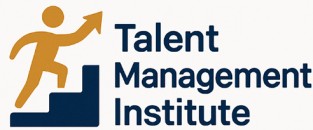
Understanding Creative Asset Management
Grasping the Essentials of Creative Asset Management
Understanding creative asset management is crucial for marketers and organizations trying to maintain brand consistency and improve efficiency. Creative assets such as images, videos, and digital content are at the core of many marketing strategies. Managing these assets effectively ensures that creative teams can access the right files, maintain brand consistency, and optimize marketing efforts. At its core, creative asset management involves the organization, storage, and retrieval of digital assets. This process is facilitated by Digital Asset Management (DAM) systems, which provide a centralized platform for storing and managing digital files. Such systems are essential in streamlining workflows, reducing time wasted in searching for files, and assuring version control. For any organization, implementing a DAM system can transform how teams interact with their creative content. It promotes the effective use of management software, integrating a range of features that cater to content management, asset access, and collaboration across teams. By having a systematic approach to asset management, organizations can better align their workflows with broader marketing strategies and talent management goals. In the fast-paced world of digital marketing, where brand consistency and timely delivery are critical, investing in a robust DAM solution brings significant advantages. Creative teams can leverage advanced tools and software to ensure that digital assets are not just efficiently managed but also strategically aligned with the organization’s objectives. For readers interested in developing effective strategies for managing creative content, a deeper dive into effective strategies for managing a solo content team can provide additional insights. By understanding the capability of digital asset systems, marketing teams can focus more on creativity and less on logistical challenges.The Role of Technology in Managing Creative Assets
The Power of Technology in Creative Asset Management
In today's digital landscape, the integration of technology into asset management plays a pivotal role. Organizations aiming to manage creative assets efficiently must leverage the right tools and systems. Digital asset management (DAM) has become the backbone for businesses looking to enhance productivity and streamline workflows related to creative content. DAM systems provide marketing and creative teams with seamless access to a vast array of files, including images and videos. One of the standout features of these systems is version control, which ensures that teams work with the most up-to-date assets. This minimizes errors and maintains brand consistency across all platforms. Furthermore, with an effective DAM solution, teams can optimize time spent on managing digital content by automating repetitive tasks and facilitating easy access to digital assets. Management software offers various features that help in organizing and sharing creative files within the organization, ensuring that everyone is on the same page. These systems not only bolster collaboration but also offer improved security for sensitive creative assets. As a result, the implementation of robust asset management software translates into enhanced efficiency and greater control over the creative process, driving the team's success. For a deeper dive into categorizing and managing digital assets effectively, consider exploring this resource on categorizing for talent management.Aligning Creative Assets with Talent Strategies
Integrating Creative Resources with Talent Objectives
The intricate process of aligning creative assets with talent strategies is critical for organizations aiming to succeed in their respective markets. A well-thought-out integration of creative assets with talent strategies ensures that teams not only operate effectively but also remain agile in the ever-changing business landscape. To orchestrate this alignment, it's important to first establish clear communication between creative teams and talent management. This involves understanding the goals and requirements of both departments, which can significantly enhance the synergy between them. The key is to foster collaboration and set shared objectives. Implementing a robust digital asset management (DAM) system can play a crucial role here. Such systems not only facilitate the efficient organization and retrieval of digital assets, like images and videos, but they can also streamline workflows and improve version control. A potent DAM solution provides marketing and creative teams with quick access to assets around the clock, ensuring that brand consistency is maintained across all digital content. Moreover, creative teams benefit from digital asset software that incorporates features such as automated tagging, categorization, and integrated asset workflows. By leveraging these functionalities, teams save time on manual tasks and can focus on enhancing their creative output, further aligning their activities with overarching talent strategies. In addition, utilizing advanced management software allows organizations to allocate resources smarter and tailor creative asset management efforts to their talent management frameworks. This enhances the overall productivity of the team and ensures that all digital assets contribute to organizational goals. Ultimately, linking creative assets with talent strategies is about fostering a cohesive environment where creative resources are not only assets but also strategic tools that support the broader vision of the organization. For those interested in exploring the nuances of talent management further, steps such as understanding adverse impact analysis in talent management can provide further depth into achieving organizational success through strategic alignment. Understanding adverse impact analysis in talent management offers valuable insights for achieving a harmonious integration between creative assets and talent strategies.Challenges in Creative Asset Management
Navigating Roadblocks in Campaign Efficiency
In the digital realm, managing creative assets is paramount for successful campaigns, yet it comes with a unique set of challenges. The intricacies of organizing and maintaining digital assets such as images, videos, and content files can hinder an organization's efficiency. These challenges require robust asset management systems tailored to the evolving needs of creative teams.
Organizations frequently encounter issues with version control. As creative assets are revised and updated, maintaining consistency across various platforms becomes daunting. Lack of a centralized management system often leads to redundancy, wasting crucial time and resources.
Moreover, ensuring brand consistency is another obstacle. Multinational companies, in particular, struggle with maintaining a uniform brand message across different regions and departments. Without an effective DAM system, marketing teams may inadvertently diverge from the brand's core guidelines.
Access is a critical concern as well. The need for different teams to quickly access the necessary assets without bureaucratic delays requires a carefully managed system. However, restricted access controls can bottleneck workflows, ultimately affecting productivity.
Finally, the volume of digital content cluttering a management dam can overwhelm existing systems. With ever-growing libraries of digital assets, organizations without advanced DAM solutions find it challenging to streamline their workflows. This lack of organization impedes creative teams' ability to produce timely campaigns.
By understanding these challenges, marketing teams can better utilize tools and features within their DAM software. Once these roadblocks are acknowledged, organizations can implement strategies to enhance their experience manager, ensuring smooth and efficient creative processes.
Best Practices for Effective Creative Asset Management
Best Practices for Unlocking the Potential of Your Creative Assets
Successfully managing creative assets requires a robust approach that combines strategic foresight with the latest management systems. Here are some best practices that can help your organization efficiently manage digital assets while ensuring they align with your overarching marketing and content strategies.- Implement a Comprehensive Digital Asset Management (DAM) System: To optimize the flow of content and maintain brand consistency, a leading dam system becomes indispensable. Its features such as version control, workflows, and easy access points streamline the process of asset management. These systems also boost the productivity of creative teams by providing tools they need to access and collaborate on digital files efficiently.
- Ensure Brand Consistency through Centralization: Centralizing your assets in a single, well-organized management system prevents file duplication and ensures that all teams have access to up-to-date images and videos. This consistency across branding and marketing efforts cannot be underestimated in terms of its impact on brand identity.
- Leverage Technology for Efficient Workflows: By utilizing dam systems with advanced software features, teams can automate repetitive tasks, reducing the time spent on managing assets manually. This frees up valuable time for teams, allowing them to focus on creative endeavors that fuel marketing innovation.
- Create Clear Access Protocols: Implementing clear permissions and access protocols is crucial. It ensures that the right people have the right access at the right time, thus minimizing bottlenecks in the content production pipeline.
- Invest in Training and Skill Development: For optimal use of these sophisticated tools, teams must be well-trained. Regular training sessions on the dam solution's functionalities ensure that every team member feels comfortable navigating the system, ultimately leading to a more seamless integration of creative asset management processes.













